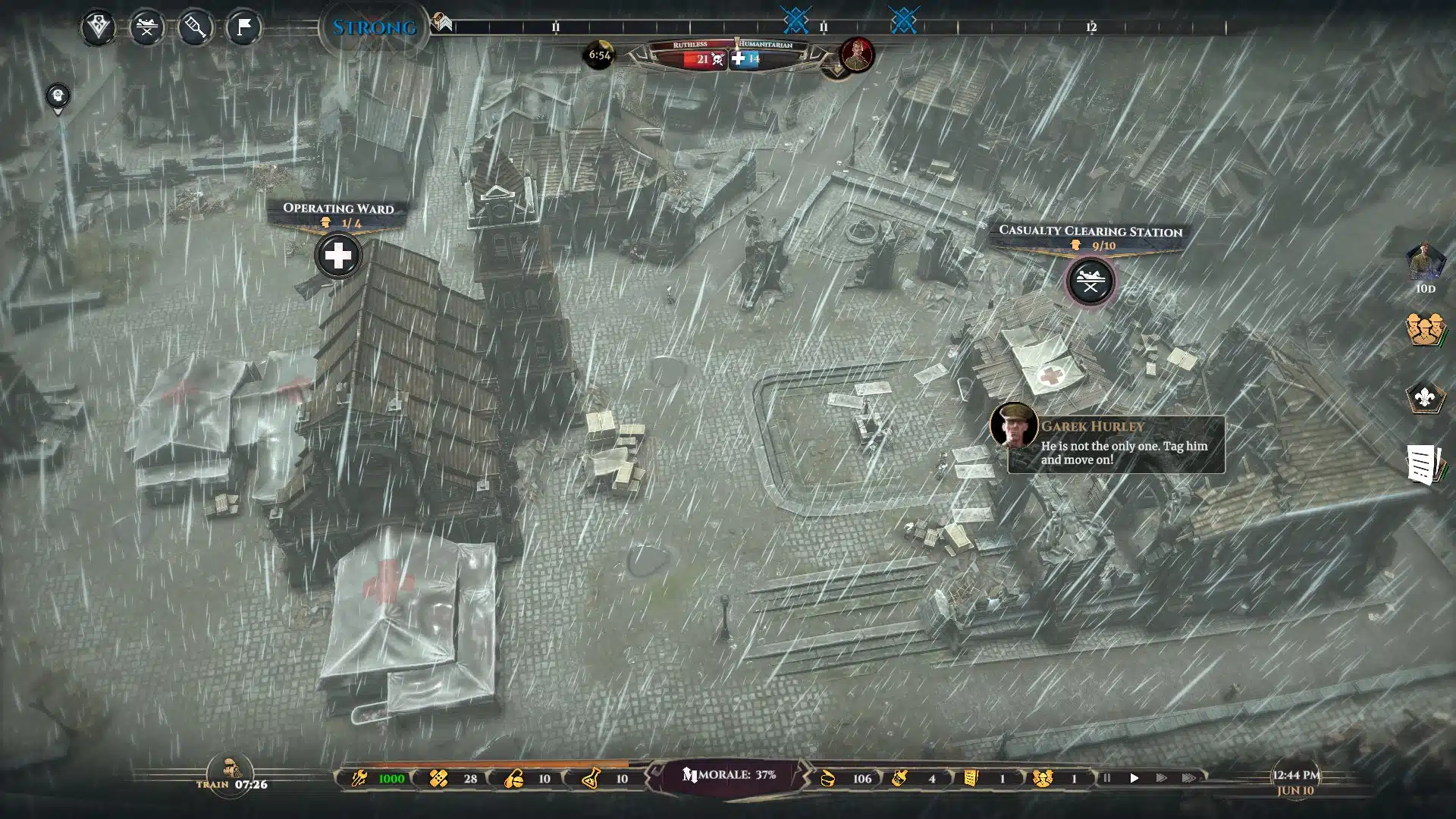War Hospital is both a tribute to the unsung heroes of war and a reminder of how conflict affects countless lives, way beyond the visible grit of the frontlines. But it’s also a real-time strategy game set during World War 1 and in this regard it doesn’t quite excel at everything that it sets out to do. Death looming at all times and a constant need to keep morale high are points where the game succeeds to a certain extent, but it gets less engaging and even frustrating due to its initial slow-pace and the rigidity of processes.
Micromanagement Hospital
War Hospital is the kind of strategy game that looks like a city-builder but isn’t entirely so, offering a more confined take on the genre focused on micromanagement. You’re in charge of a field hospital and the first one to decide who lives and who dies, taking care of wounded soldiers before they succumb to the horrors of war. What seems like a fairly straightforward gameplay loop – ultimately, it is simpler than in other games – gets a little more complicated when you ramp up the improvements and many variables come into play, such as different types of healing and operation procedures.
One of the aspects that feels like a missed opportunity here is the rigid building system, with all the main structures already set in place and ready for you to start assigning workers to them. It’s a way to steer you down a given path and to make the game “understand” the time it takes for the staff to go from the lodging to the casualty clearing station, for example, saving on more troublesome things such as path-finding and custom routes. Having the option to set the structures on the places you wish for could potentially pave the way for unique playthroughs, as each player would start strategizing right there, placing them in order to minimize traversal and assure that no precious seconds are lost.
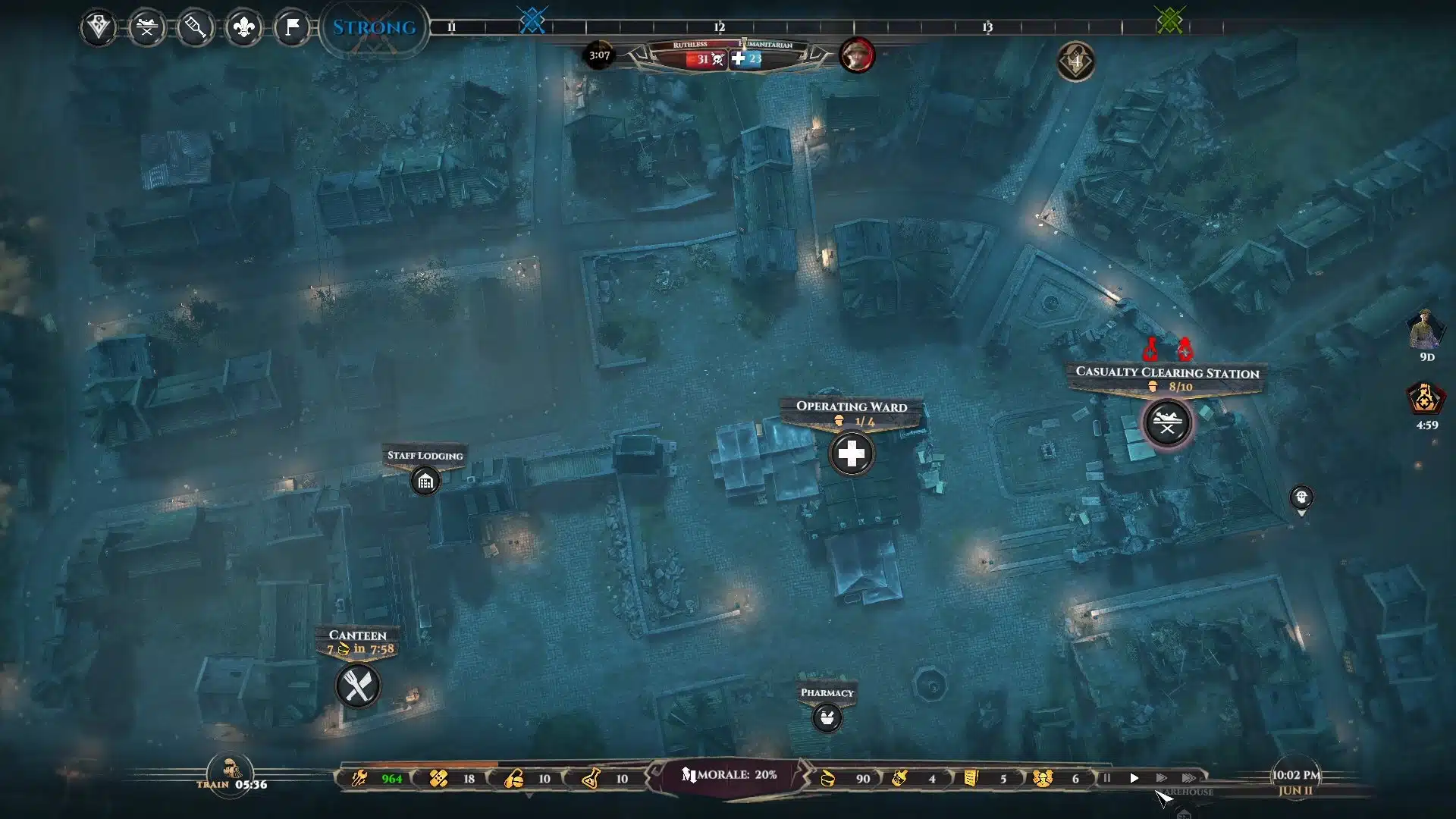
Alas, that isn’t the case, and the default field hospital layout is available from the beginning of the game, each potential upgrade attached to the respective building, just waiting for your order to get the engineers working on it.
With this out of the way, War Hospital focuses on managing staff and making sure that lives are saved in the least time possible. But we are dealing with representations of humans, who get exhausted, demotivated, and need to rest before collapsing, something that the game deals with albeit forgetting that excessive micromanagement can lead to tedium, as it does indeed. We can order medics, nurses, engineers, and others to rest, but with the various units in the field and a constant need to keep a watchful eye on everything and everyone, the gameplay loop becomes a strain. The setting is meant to be stressful, understandably, and it is, bolstered by the music that seems out of a horror movie, but it becomes overly punishing as you progress, instead of expanding into something more interesting and absorbing.
Staff have preferences, from the work structure to shifts, things that you can coordinate with an interface that tries to be resourceful but feels a little convoluted. Fail to get a specific type of worker somewhere and that will severely delay or even halt the recovery of any soldier, a cycle that ends up becoming tiresome due to the constant need to manually send staff to rest.
Live and Let Die
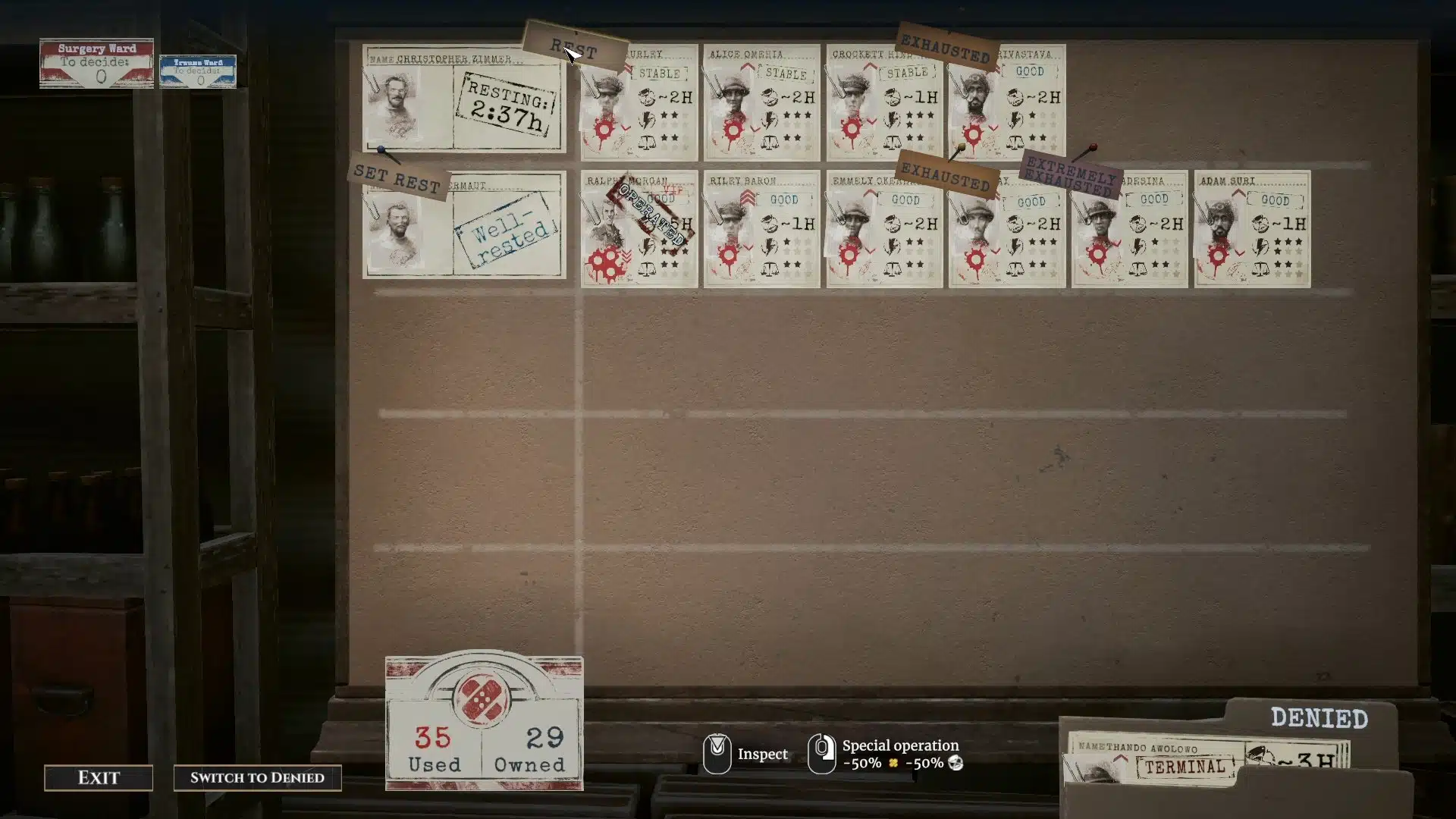
One of the most interesting aspects in the game is the casualty clearing station, where the wounded are admitted to. A couple of surgeons are dealing with a host of patients, with decisions coming fast and furious as you choose the order to treat and operate on some of them, and to deny treatment to soldiers who are severely hurt and potentially not capable of surviving a complicated and lengthy surgery. Attempting to do so and failing takes a big hit on field morale, forcing you to decide who survives or not right off the bat. Naturally, casualties happen anyway, since patients arrive in different conditions and get worse the more they wait, with time playing a big role in this and every other aspect of War Hospital.
The moral concerns brought by this segment of the game are prominent, as you play God with the virtual lives of others, sacrificing some for the greater good, or at least thinking that much. The line between good and bad is even more blurred when you receive some special requests from higher-ups, asking you to make a priority of a wounded VIP. Will you obey and eventually earn some precious resources, or treat them as any other patient?
After treatment and possibly surgery, soldiers are sent to the rehabilitation center, and will be back on their feet after some time. This is when we can choose between three options with varied outcomes, pretty much a resource pool of sorts under a different guise: releasing from duty boosts morale, sending to HQ rewards you with military drafts to spend on improvements, and sending to trenches boosts combat power against the regular German assaults.
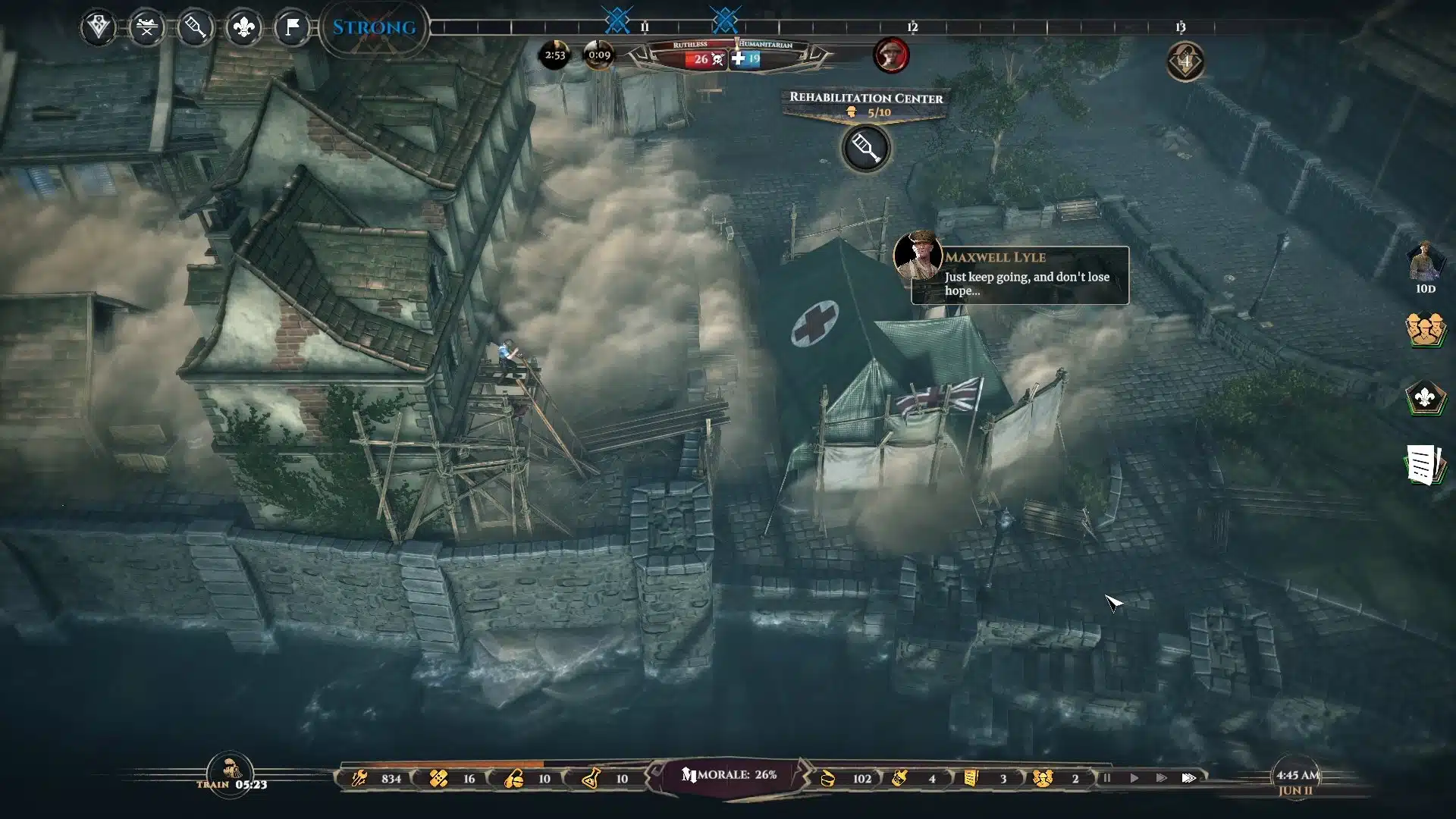
Since each soldier has stats displaying their combat power, it’s best to send the more appropriate ones into the trenches, paying attention to the timeline showing the hours when the next assault is happening – a bland and automated cutscene is pretty much all there is to it. Besides, the icon colors represent your ability to effectively repel the attack and avoid a massive number of wounded, putting your hospital under huge strain.
Eventually, you’re going to unlock the scout tent, a nice little touch of variety to the game. With it, you can use the map to examine the surroundings of the field hospital and choose an event to investigate deeper. Short stories unfold and task you with making an often conflicting choice, from the one that gives you more resources to others that take a more humane approach.
The Strains of Game Warfare
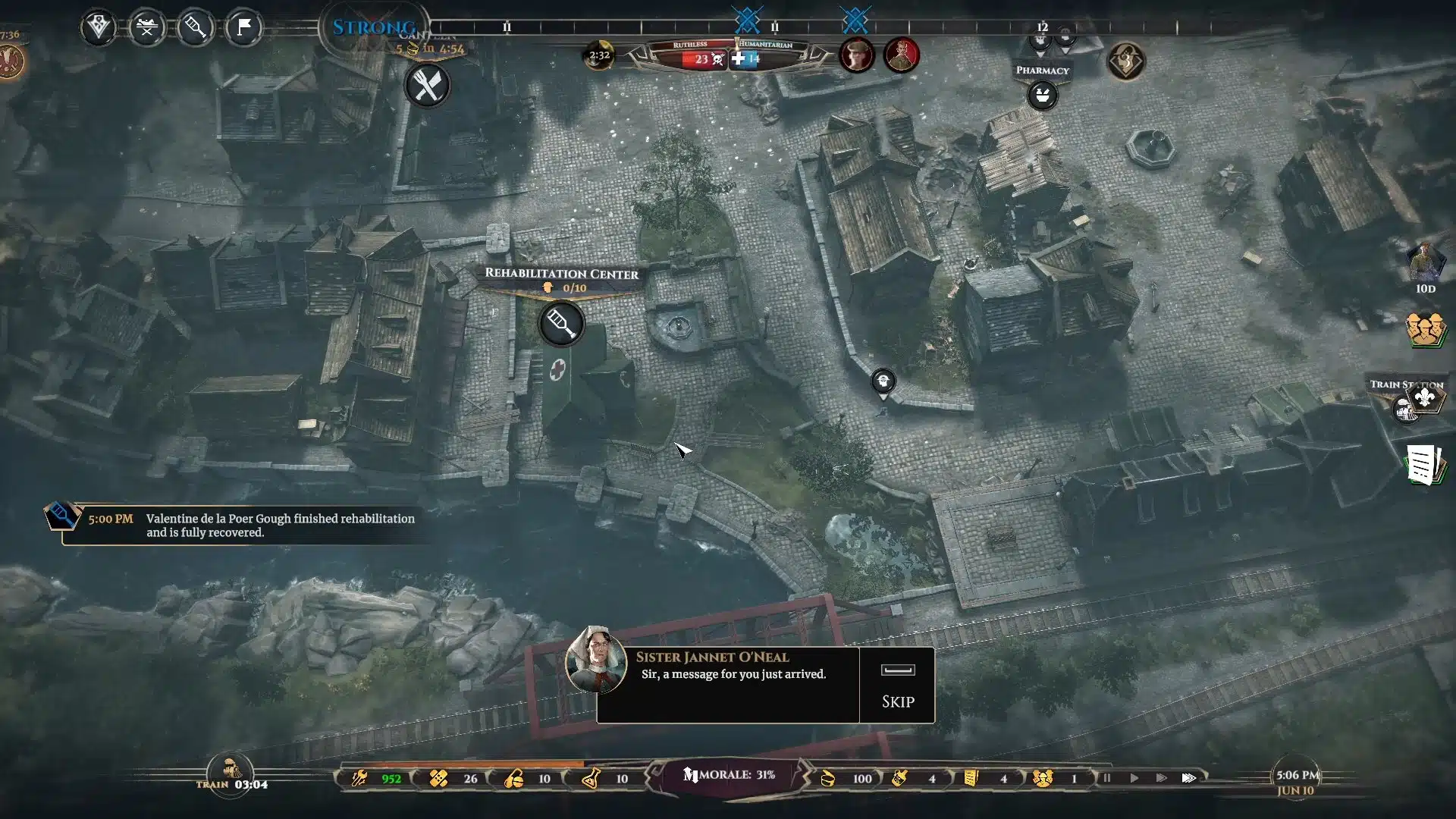
All this would be great if War Hospital didn’t become boring after a few hours. The mechanics get repetitive quickly, and one of the things that could relieve you from the constant staff micromanagement – hiring more personnel – is hard to come by, requiring staff permits that drop from very rare events. Morale falls sharply, soldiers die because they just do, and you repeat the same actions hoping for different results or something that gets you hooked; instead, you tell this nurse to pause for a while, that engineer to take a break, wait for the doctors to… you guessed it, rest, and so on.
War Hospital has its heart in the right place but unfortunately that’s not enough to make a good game. The loop is more interesting in theory than in practice, and it becomes repetitive and more of a chore to play than it should be. There’s no denying that the idea of paying homage to the brave people working in hospitals during such times deserves a wholehearted recommendation, but sadly as a game per se, War Hospital isn’t much more than a good attempt.
Score: 6.5/10
Pros:
- A brave game idea that is worth checking
- Some interesting management possibilities and moral choices
Cons:
- Gameplay is too rigid and quickly repetitive
- UI can be overwhelming and confusing
War Hospital review code was provided by the publisher. You can read MP1st’s review and scoring policy right here.
